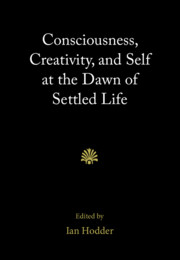Book contents
- Consciousness, Creativity, and Self at the Dawn of Settled Life
- Consciousness, Creativity, and Self at the Dawn of Settled Life
- Copyright page
- Contents
- Contributors
- Acknowledgments
- Part I Introduction to the Themes, Site, and Region
- Part II Higher Levels of Consciousness
- Part III Greater Innovation and Creativity
- 7 The Meronomic Model of Cognitive Change and Its Application to Neolithic Çatalhöyük
- 8 Containers and Creativity in the Late Neolithic Upper Mesopotamian
- 9 Creativity and Innovation in the Geometric Wall Paintings at Çatalhöyük
- Part IV Greater Awareness of an Integrated Personal Self
- Notes
- Index
- References
8 - Containers and Creativity in the Late Neolithic Upper Mesopotamian
from Part III - Greater Innovation and Creativity
Published online by Cambridge University Press: 22 February 2020
- Consciousness, Creativity, and Self at the Dawn of Settled Life
- Consciousness, Creativity, and Self at the Dawn of Settled Life
- Copyright page
- Contents
- Contributors
- Acknowledgments
- Part I Introduction to the Themes, Site, and Region
- Part II Higher Levels of Consciousness
- Part III Greater Innovation and Creativity
- 7 The Meronomic Model of Cognitive Change and Its Application to Neolithic Çatalhöyük
- 8 Containers and Creativity in the Late Neolithic Upper Mesopotamian
- 9 Creativity and Innovation in the Geometric Wall Paintings at Çatalhöyük
- Part IV Greater Awareness of an Integrated Personal Self
- Notes
- Index
- References
Summary
Stimulated by my reading of Merlin Donald (1991, 1998), I shall explore the notions of ‘consciousness’ and ‘creativity’ through the concept of the extended mind. The crux of my argument is that the expanding material world in the Neolithic can be seen as an expansion of the extended, or distributed, mind. I shall leave aside what actually constitutes human cognition or how it is modularly organized (see Wheeler, Chapter 4, this volume). Rather, being an archaeologist, I shall concentrate on the ‘extended’ part of the hybrid, working from the broad notion that the human cognitive world and the (material) environment in which humans socialize are dialectically related (Boivin 2008; Clark 1997; Dunbar et al. 2010; Malafouris 2016; Renfrew 1998, 2004, 2012).
- Type
- Chapter
- Information
- Consciousness, Creativity, and Self at the Dawn of Settled Life , pp. 168 - 189Publisher: Cambridge University PressPrint publication year: 2020



